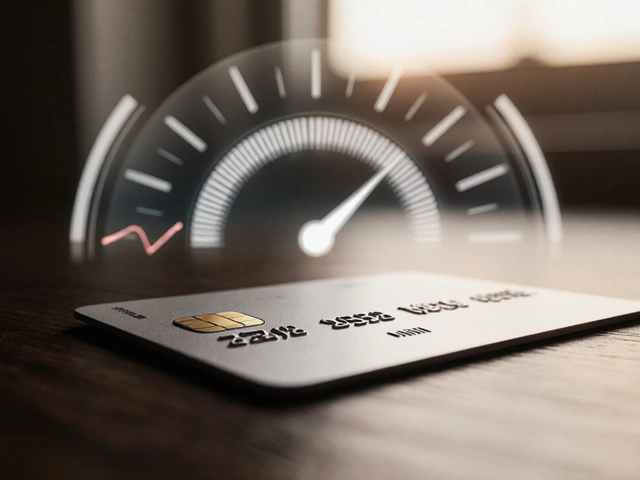
In the bustling world of finance, keeping track of the various banking requirements can be quite the task. Finding a bank that aligns with your financial capabilities is vital, especially when it comes to maintaining the required minimum balance. In India, several banks offer accounts with a minimum balance requirement as low as 1000 INR, providing an accessible option for many.
This article dives into understanding the intricacies of minimum balance requirements and highlights popular banks in India that offer such services. We will also weigh the pros and cons of choosing accounts with lower minimum balance requirements. As we explore these options, practical tips for maintaining your bank account efficiently will be shared, ensuring you benefit from the best that the Indian banking sector has to offer.
- Understanding Minimum Balance Requirements
- Popular Banks with 1000 INR Balance
- Pros and Cons of Low Minimum Balance
- Tips for Maintaining Your Bank Account
- Conclusion and Recommendations
Understanding Minimum Balance Requirements
When it comes to banking, one often encounters the term "minimum balance requirement." It's a threshold that banks set, dictating the least amount of money you must keep in your account to avoid any penalties. This concept is crucial as it directly impacts account holders by ensuring continued access to banking services without facing unnecessary charges. In India, this requirement varies significantly across different banks and account types. The criteria are usually determined by the account’s purpose, with savings and current accounts often having different standards. Grasping these requirements helps consumers make informed decisions, ultimately affecting how they manage their finances.
Minimum balance requirements are essential for banks too, as they utilize these to ensure a certain liquidity ratio is maintained. This keeps the banks operational and stable, providing them the means to issue loans and, consequently, generate profit. Notably, the minimum balance stipulation is also a strategic move by banks to attract and retain customers who can afford to maintain such balances. This element of banking can sometimes be negotiable, and customers with strong financial connections or long-standing relationships might secure favorable terms.
"Understanding the rationale behind minimum balance requirements can empower account holders with the necessary knowledge to navigate their banking needs more strategically." — Financial Analyst, Rahul Desai
It’s intriguing to note that some banks have addressed a widespread demand by lowering their minimum balance thresholds to as low as 1000 INR. Such measures aim to increase financial inclusion and cater to a broader audience. For many customers, particularly in regions with limited financial literacy, maintaining a low minimum balance can relieve the pressure of keeping larger sums tied up, money that could otherwise be used to meet daily needs or unexpected expenses. Some banks have gone the extra mile, offering educational services to clients that outline the specifics of maintaining their bank accounts within these parameters.
Before opening an account, one should thoroughly analyze the terms and fees associated with the bank’s minimum balance policy. Reading the fine print can save potential headaches in the future. For instance, banks might levy service charges if the balance dips below the required amount, which can vary monthly. These fees can add up over time, cutting into the savings of individuals, thus the importance of comprehending every detail becomes apparent. Some banks may even impose stringent rules, such as maintaining the balance for consecutive months to avoid penalties altogether.
In this ever-transforming financial landscape, many banks have started offering enticing features to balance out the obligation of maintaining a minimum balance. Accounts often now come with benefits like free ATM withdrawals, cashback on purchases, and complimentary checkbooks. However, not all offers are created equal, so it’s vital to compare the perks across different banks before committing. With a robust understanding of minimum balance requirements, individuals can better choose accounts that align with their lifestyle and financial goals, ensuring a more harmonious banking experience that capitalizes on every spent or saved rupee.
Popular Banks with 1000 INR Balance
Choosing the right bank is crucial when considering financial management, especially if maintaining a low minimum balance is a priority. In India, a few well-regarded banks offer the benefit of a minimum balance of merely 1000 INR in their savings accounts, making banking accessible to a broad audience. One of the top contenders in this domain is the State Bank of India (SBI), which has been a cornerstone in the Indian banking sector. SBI's basic savings account is widely appreciated for requiring a low minimum balance, making it a popular choice for both urban and rural customers seeking bank accounts with minimal financial stress.
Another formidable player is the Punjab National Bank (PNB), known for its extensive rural and urban reach. PNB offers an array of savings accounts with low minimum balance requirements to cater to different demographics. This initiative not only simplifies banking for the masses but also educates them about organized financial management. Additionally, the HDFC Bank provides a range of savings accounts that suit various needs, all while keeping the minimum balance policy favorable. Their digital banking experience ensures that transactions are seamless and efficient, enhancing overall customer satisfaction.
Axis Bank is also worth mentioning as it offers accounts that are particularly beneficial for salaried individuals due to its relaxed balance requirements. Notably, their reputation for customer service combined with innovative products makes Axis Bank a preferred choice for those navigating online banking in India. To supplement this information, consider a statement from an expert in finance, "Access to banking services with low balance requirements not only encourages savings but also empowers individuals with better control over their money," as highlighted by a report in the esteemed Financial Express.
In a broader context, ICICI Bank presents competitive options focused on convenience and ease. Accommodating lesser-known savings accounts with minimal balance requirements has positioned ICICI strategically among budget-conscious individuals. These accounts prove strategic for those looking to maximize their financial planning without compromising on their daily banking needs. A noteworthy element is that these banks instill a sense of trust among their customers by ensuring reliability and security, particularly in the digital realm.
The commitment of Indian banks to making financial services more inclusive is reflected within these offerings. For those constantly on the go or residing in regions where banking infrastructure is still developing, these banks also invest significantly in technological advancements. It is common to find comprehensive digital platforms that support 24/7 transactions and financial management, thus aiding customers in maintaining their required balances effortlessly even remotely. These banks are not just financial institutions but instruments of empowerment, helping bridge the gap between urban and rural financial inclusion. Moreover, banking in India has been evolving rapidly, yet these banks have steadfastly maintained their promise of low-balance accounts, embracing modern conveniences while acknowledging traditional requirements.

Pros and Cons of Low Minimum Balance
Choosing a bank account with a low minimum balance requirement, like those offering a minimum of 1000 INR, certainly comes with its distinct advantages and potential downsides. For starters, one of the most appealing aspects of these accounts is their accessibility. They are especially beneficial for students, young professionals, or anyone just starting out in managing finances, as these individuals often do not have a large amount of money to keep idle in an account. By maintaining a minimal amount, these accounts offer a way to engage in the banking system without the stress of maintaining a higher balance.
Advantages
One real advantage of low minimum balance accounts is the reduction in financial stress, as account holders aren’t forced to have significant savings just to avoid penalties. This means that money can be diverted to other productive avenues such as short-term investments or meeting immediate necessities. Additionally, such accounts often come with relaxed regulations and minimal charges, making them financially appealing. As noted by a financial analyst in India Today, "Low minimum balance accounts cater to the primary banking needs without the burden of high maintenance costs." Furthermore, in today’s digital age, these accounts often integrate seamlessly with mobile and online banking platforms, providing ease and convenience in managing transactions.
Drawbacks
However, these benefits come with their set of limitations. A primary disadvantage of having a low minimum balance account is the limited services offered compared to regular accounts with higher requirements. Often, such accounts may have constraints on transactions, limited access to checkbook facilities, or a cap on free ATM withdrawals. Banks may also charge for other services, which could offset the financial convenience of maintaining a lower balance. This could be a crucial consideration for those who rely heavily on diverse banking services. In some cases, banks may not offer the same interest rates on these accounts, which can lower the overall yield for account holders looking to grow their savings over time.
"The balance between costs and accessibility is crucial when selecting a bank account," says Ramesh Khanna, a reputed financial consultant. "While low minimum balance accounts offer accessible banking, they may restrict other financial opportunities that could be beneficial in the long run."
In summary, while accounts with a minimum balance of 1000 INR in Indian banks provide an accessible entry point into financial management, it's vital to weigh these advantages against potential limitations. Understanding your personal financial habits and needs is essential in deciding if this type of account is right for you. Keeping an eye on emerging offers and interest rate changes can ensure that you maximize the benefits of a low minimum balance account.
Tips for Maintaining Your Bank Account
Managing a bank account efficiently is as much about maintaining the required minimum balance as it is about ensuring that your financial health remains robust and low-stress. With the financial landscape constantly evolving, having a structured approach to your banking habits can greatly benefit your finances. One essential habit is keeping a buffer amount slightly above the minimum required balance. By doing this, you ensure that unexpected debits do not dip your balance below the requisite threshold, potentially saving you from penalties. A wise practice would be to periodically review your bank statements to track your spending patterns and identify areas where you might be overspending. Many people find that this simple exercise provides insights into their spending behaviors, allowing for adjustments that can further safeguard your account balance.
Consider setting alerts on your banking app for low balance notifications. Most banks in India, including those popular for online banking, offer apps with customizable alerts. These alerts help you stay informed and make timely cash deposits or transfers. Moreover, partaking in regular financial audits of your account, even if informal, can help. This goes beyond looking at the balance — it's examining bank charges, suddenly increased spends in some categories, and any recurring fees that might have gone unnoticed. As the renowned financial advisor and editor, Suze Orman once aptly said,
“Owning a home is a keystone of wealth — both financial affluence and emotional security.”Similarly, owning your financial knowledge and being adept helps secure not just your bank account but your financial prosperity in life.
Another vital tip is to automate your savings. Setting up standing instructions for periodic transfers into a savings account can help in maintaining minimum balances without having to think much about it. Many individuals do this right after their salary is credited, ensuring savings are a priority. Once you have managed to keep a steady amount in your account, directing your focus to exploring investment options or different types of accounts, like a high-yield savings account, would be prudent. This also means periodically renegotiating terms with your bank to see if better options are available, particularly with the evolving spectrum of Indian banks and their offerings.
With today's banking options, it's easier than ever to deliberately manage accounts through accessible tools and knowledgeable strategies. Have monthly check-ins to ensure you're consistently meeting your financial goals, whether they be a continued build-up of your bank account or increased savings. Always keep in mind that diligent management now can prevent future complications. For some, structuring their account like a business, with checks and balances systematically in place, can inspire disciplined maintenance. Don't be afraid to reach out to bank advisors, as they often possess the insight that could offer unmatched guidance tailored to your unique situation. Does your bank account reflect your desired lifestyle and financial aspirations? If the answer isn't a confident 'yes,' it might be time for those crucial adjustments within your financial practices.

Conclusion and Recommendations
As we've journeyed through the landscape of Indian banks offering accounts with a 1000 INR minimum balance, it's clear that the accessibility of banking services can significantly influence one's financial management. While this seemingly small detail—being able to maintain a lower balance—might appear trivial, it plays a crucial role in demystifying banking for wide sections of the population. This option truly democratizes finance, inviting individuals with varying income levels to be a part of the formal financial system.
Reflecting on which banks have championed this financial inclusivity, it’s essential to acknowledge that ease of access is paired with both advantages and limitations. Customers need to be aware of any accompanying fees for additional services and gauging whether such offerings align with their banking needs. This is where personalized recommendations become integral. A choice that suits one customer marvelously might not serve another’s requirements quite as well. Consequently, assessing one's financial behavior and needs should ideally guide the decision-making process.
When selecting the right bank, consider if they provide substantial digital infrastructure for online banking services. These can include seamless apps, robust security measures, and real-time customer support—all factors that can enhance your banking experience dramatically. The convenience of handling transactions online without the need to visit a branch not only saves time but can also add a layer of safety in managing your finances. Aspiring to a regime where accessing your funds or getting assistance with financial products is hassle-free should be non-negotiable.
"Banking today is not just about money transactions. It’s about empowerment and inclusion for all," emphasized Shikha Sharma, a noted figure in the banking industry, reflecting the broader philosophy of modern banking attitudes.
On a practical note, establishing vigilant financial habits can aid in maintaining the needed balance effortlessly. For instance, regularly monitoring account statements, setting budget thresholds that align with your balance requirements, and incorporating technology-driven tools like mobile banking alerts play a pivotal role in keeping you informed and proactive in your financial stewardship.
Ultimately, making an informed choice about your banking partner that respects both your current financial situation and future goals is essential. With banks increasingly oriented towards customer-centric models, you, the customer, wield the power. By choosing wisely, you not only gain a service provider but a tool—a bridge that can steer your financial journey towards success with minimal roadblocks. Whether it’s personal or professional banking needs, the priority should always be aligning with a bank that values transparency, reliability, and customer-centric innovation.








Write a comment